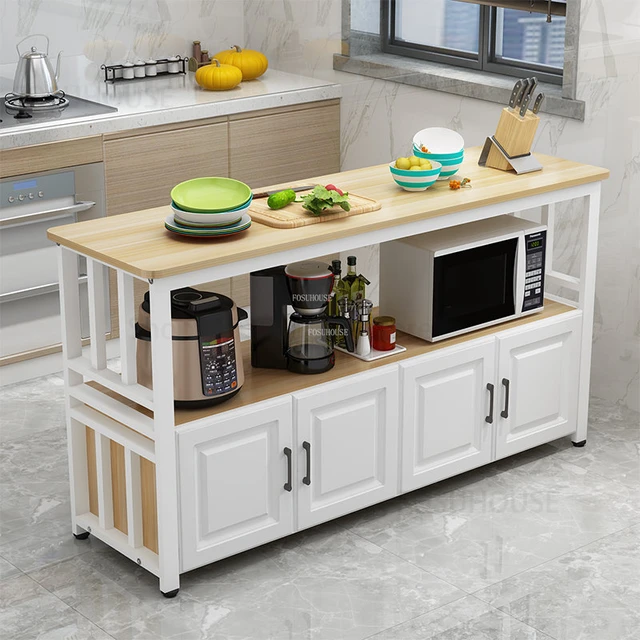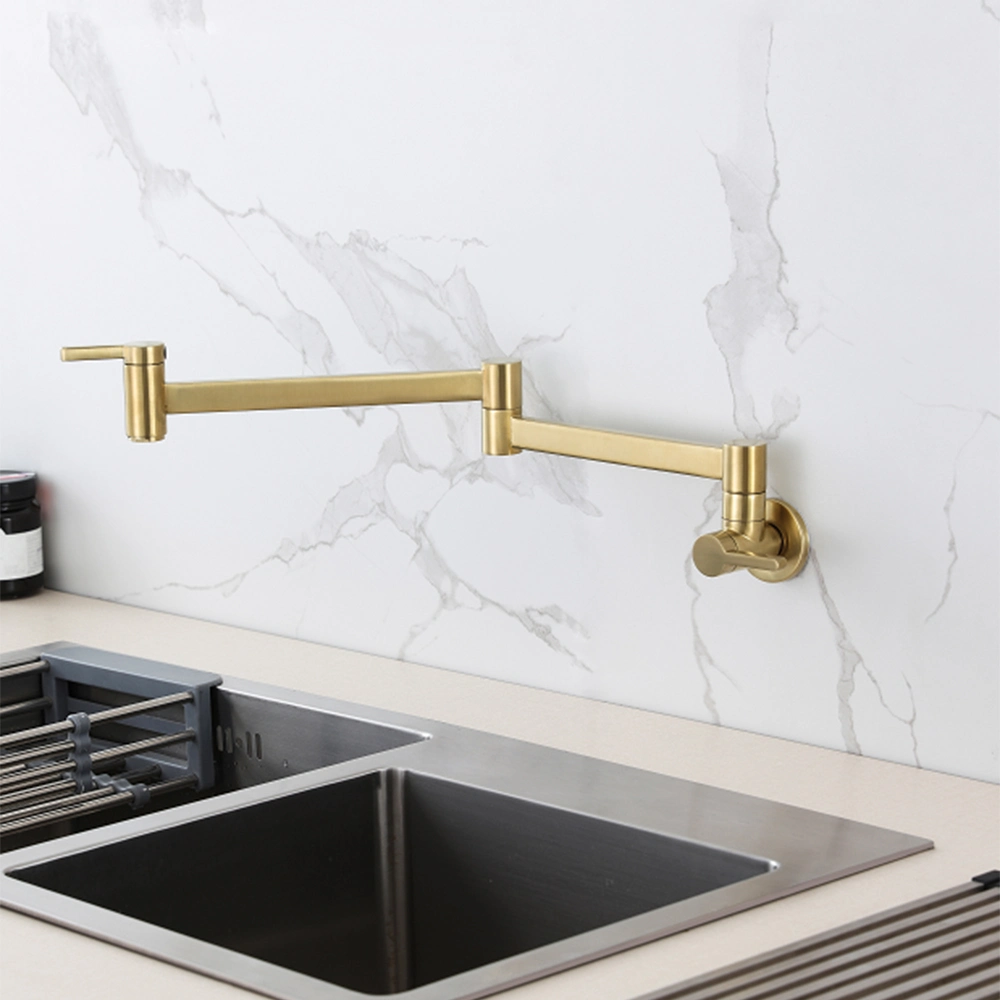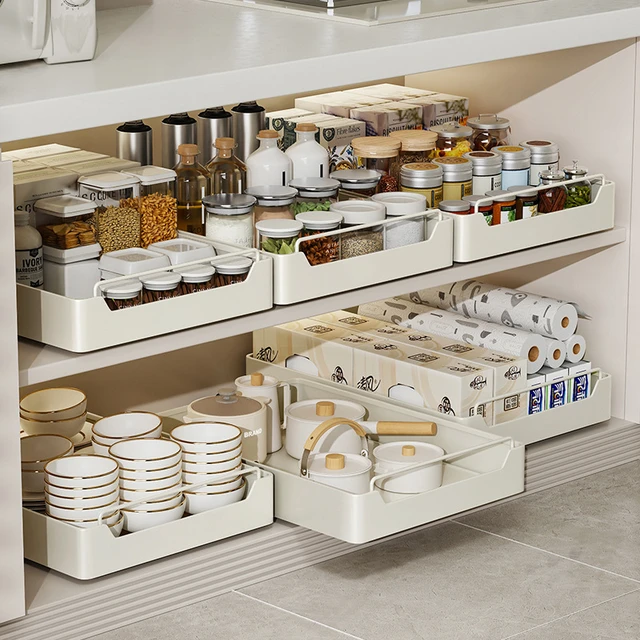Introduction to Buck Kitchen Knives
When exploring the realm of culinary tools, Buck kitchen knives stand out for their distinctive approach and craftsmanship. Unlike traditional kitchen knives, Buck introduces innovation not only through blade quality but also in design aesthetics.
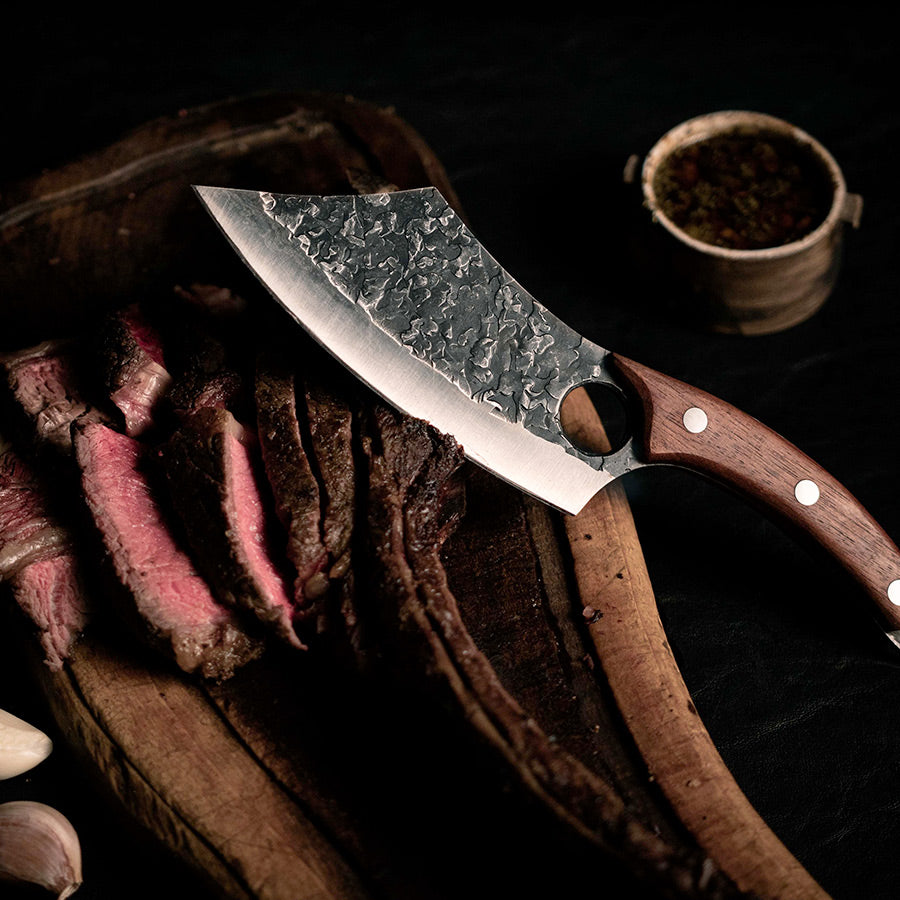
Unique Features and Design
Buck kitchen knives differentiate themselves with unique design elements and functionality. They prefer using 420HC steel, known for its balance between hardness and corrosion resistance. This choice ensures the knives are both durable and dependable in a kitchen setting. Additionally, the innovative design features like the short, hollow grind on the blades help in reducing food stickiness, which is a common issue while slicing moist foods like tomatoes.
Each knife from Buck also features a handle design that, while unconventional, provides a new level of control and comfort. The handles, made with materials like Rosewood Dymalux and elk antler, offer a distinct look and feel. The design allows for a full grip, which is beneficial for those not accustomed to the pinch grip typically recommended for kitchen knives.
These unique elements make Buck kitchen knives not just tools, but a statement of innovation and quality in culinary circles. They bridge the gap between traditional craftsmanship and modern kitchen needs, making them an intriguing option for both home cooks and professional chefs alike.
The Anatomy of Buck Kitchen Knives
For chefs and home cooks, the anatomy of a knife is key to its performance. Buck kitchen knives stand out in their construction and choice of materials, which are tailored to enhance cutting precision and durability.
Blade Specifications and Materials
Buck kitchen knives use 420HC steel for their blades, striking a balance between edge retention and corrosion resistance. The blades measure 8 inches, the standard in chef knives, and feature a unique hollow grind that is not common in kitchen cutlery. This grind helps to keep food from sticking, making slicing smoother and more efficient.
The blade hardness is rated at 58 HRC, offering an optimum blend of toughness and ease of sharpening. With an overall length of 13 inches, the blade’s 8-inch cutting edge is designed to handle a wide range of kitchen tasks with ease.
Handle Design and Materials
The handle’s design and materials are an essential element of Buck kitchen knives’ anatomy. Options like Rosewood Dymalux and elk antler stand out for both their aesthetic and functional qualities. The handles are crafted with extreme curves, and offer a full grip that some users may find more comfortable, especially when not using a pinch grip.
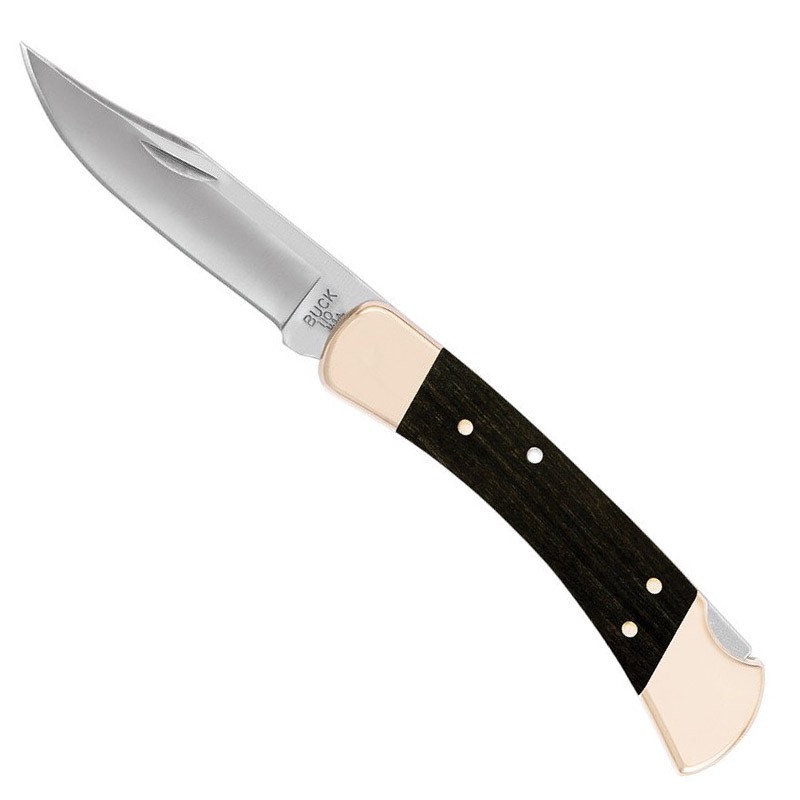
While the handle design may be unconventional, it provides a unique feel that can improve control during cutting tasks. The handle’s material options not only contribute to the knife’s unique look but also to its ergonomics, providing a good balance with the blade that enhances overall handling.
Performance and Usability
When considering the practicality of Buck kitchen knives, their performance and usability are standout features.
Cutting Efficiency and Edge Retention
Buck kitchen knives demonstrate impressive cutting efficiency due to their unique blade characteristics. The 420HC steel, while offering corrosion resistance, also maintains a sharp edge even after extensive use. Their distinctive hollow grind plays a crucial role as well. It reduces friction against the food, allowing for cleaner, more efficient cuts without the drag usually experienced with flatter grinds.
The ability of these knives to retain their sharpness means less time spent on maintenance and more on actual cooking. Regular honing will keep them in top condition, aligning perfectly with the needs of both busy home kitchens and professional settings.
Ergonomics and Handling
In terms of ergonomics, Buck kitchen knives offer a slightly different experience compared to traditional chef knives. The handle design, which includes materials like Rosewood Dymalux, provides a robust and comfortable full grip, deviating from the typical pinch grip many chefs are accustomed to. This change might require some adaptation but often leads to less hand fatigue during prolonged use. The handle’s unique shape, while unconventional, offers an effective counterbalance to the blade, ensuring precise control and reducing slip incidents during busy cooking sessions.
In every aspect of performance and usability, Buck kitchen knives redefine standard kitchen tasks, making them both enjoyable and efficient with a unique blend of cutting-edge design and traditional craftsmanship.
Maintenance and Care
Good knife care can ensure your Buck kitchen knives last for many years.
Honing and Sharpening Buck Kitchen Knives
Keep your knives sharp and effective with regular honing. The 420HC steel blade responds well to honing rods, aligning the edge properly. If you notice dullness, use a quality sharpening tool. Sharpen as needed, but don’t overdo it to maintain the blade’s integrity.
Cleaning and Storage Tips
Clean your Buck knives by hand, not in the dishwasher. Wash with warm, soapy water and dry thoroughly. Store knives in a dry place, ideally in a block or sheath, to protect the blade. Keeping knives clean and safely stored extends their function and beauty.
Comparison with Other Brands
When comparing Buck kitchen knives to other brands, there are several points to consider.
Similarities and Differences in Features
Buck kitchen knives have a solid place in the market, thanks to unique features they boast. The short, hollow grind of their blades is a rare find in the kitchen but common in pocket knives. This grind reduces food stickiness, a plus for any chef. Buck opt for 420HC steel, valuing edge retention and corrosion resistance. The handle designs of Buck knives embrace materials like Rosewood Dymalux and options like elk antler, providing unique grips that differ from other brands. Most kitchen knives don’t offer these handle materials.
In contrast, brands like Victorinox and Lamson focus on more traditional aspects. Victorinox Fibrox Pro, for example, employs a non-slip handle and a standard blade designed for versatility. Lamson knives appeal with their weight and handle comfort. Their chef knives tend to have full flat grinds and lack the hollow grind Buck uses.
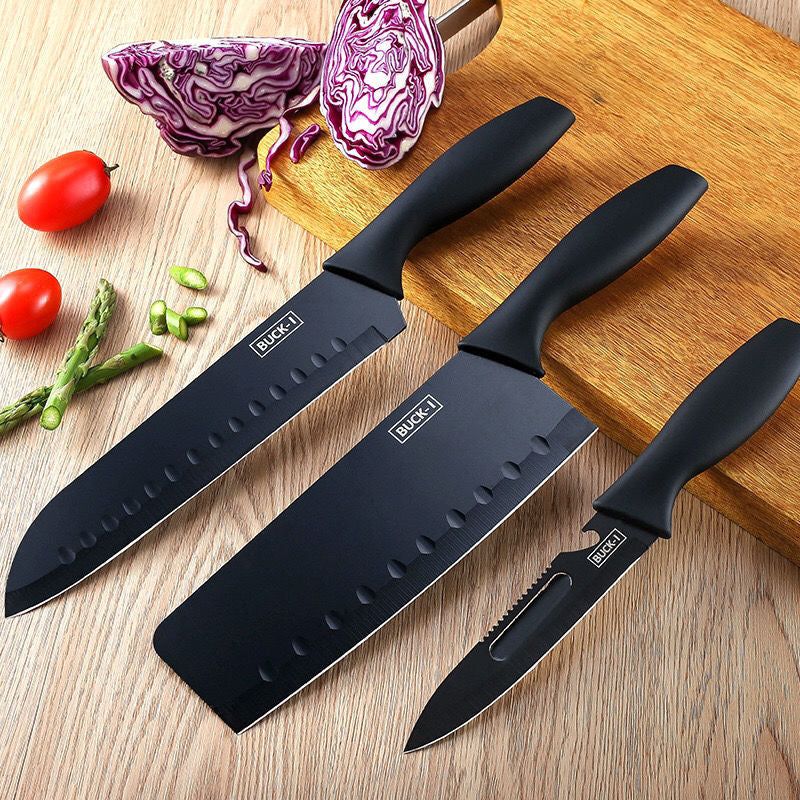
Pros and Cons Compared to Competitors
Pros:
- Buck kitchen knives boast blades with a unique hollow grind that keeps food from sticking.
- The 420HC steel ensures a durable edge and easy sharpening.
- Their handle materials and design offer a distinctive aesthetic and functional grip.
Cons:
- The unusual handle may take time to get used to, especially for those familiar with pinch grips.
- The edge might roll more easily compared to harder steel knives, requiring regular honing.
- Buck’s packaging is less protective, leaving room for improvement on safety.
Competitors might have the edge in familiarity and traditional design, but Buck offers distinct advantages in innovation and material choice. Each brand has its own strengths and weaknesses, and Buck kitchen knives stand out for their fresh take on culinary tools.
Aesthetic and Packaging
When it comes to the overall experience of purchasing and using Buck kitchen knives, aesthetic and packaging cannot be overlooked.
Visual Design Elements
Buck kitchen knives feature designs that marry form and function in a distinct way. The handles, available in unique materials like Rosewood Dymalux and elk antler, add a touch of class and rustic appeal. Whether it’s the sleek curve of the handle or the unusual hollow grind of the blade, these knives stand out. They catch the eye and are sure to be conversation starters in any kitchen. Plus, the balance between the blade and the handle enhances the knife’s visual symmetry, making it a centerpiece of kitchen design.
Safety and Packaging Quality
Despite the elegant design of the knives, packaging quality requires attention. Buck’s current packaging strategy is a sturdy box without padded or secure internal fittings. While the knives come with a protective sleeve and a foam piece, there’s more freedom of movement than is ideal, which could pose a risk when unboxing. A snug-fit sleeve and a secure cardboard insert would greatly increase safety. Potential improvements include form-fitting foam or a magnetic box closure for added security. When opening the package, caution is advised to prevent injury from a loose blade.
Purchasing Advice
Selecting the right kitchen knife is a balance of need, budget, and personal taste. Buck kitchen knives, with their unique attributes, might not be for everyone, but they hold a special appeal for certain users.
Who Should Consider Buck Kitchen Knives?
Buck kitchen knives are ideal for those seeking an alternative to conventional kitchen cutlery. If edge retention and distinctive design are your priorities, these knives are worth considering. Outdoor enthusiasts accustomed to Buck’s outdoor line may also appreciate the familiar feel and quality. They suit home cooks eager for a slice of innovation in their kitchen tools. Lastly, anyone looking for a touch of rustic elegance in kitchenware might be drawn to the unique materials, like Rosewood Dymalux and elk antler.
Warranty and Customer Support
Buck stands behind its kitchen knives with a reassuring warranty. The Buck’s Lifetime Warranty covers any defects in material and workmanship. For ease of mind, customer support is available to assist with any concerns. Whether it’s guidance on knife care or warranty claims, Buck’s commitment to customer satisfaction shines through. This support makes the purchase of a Buck kitchen knife an investment in long-lasting quality.
